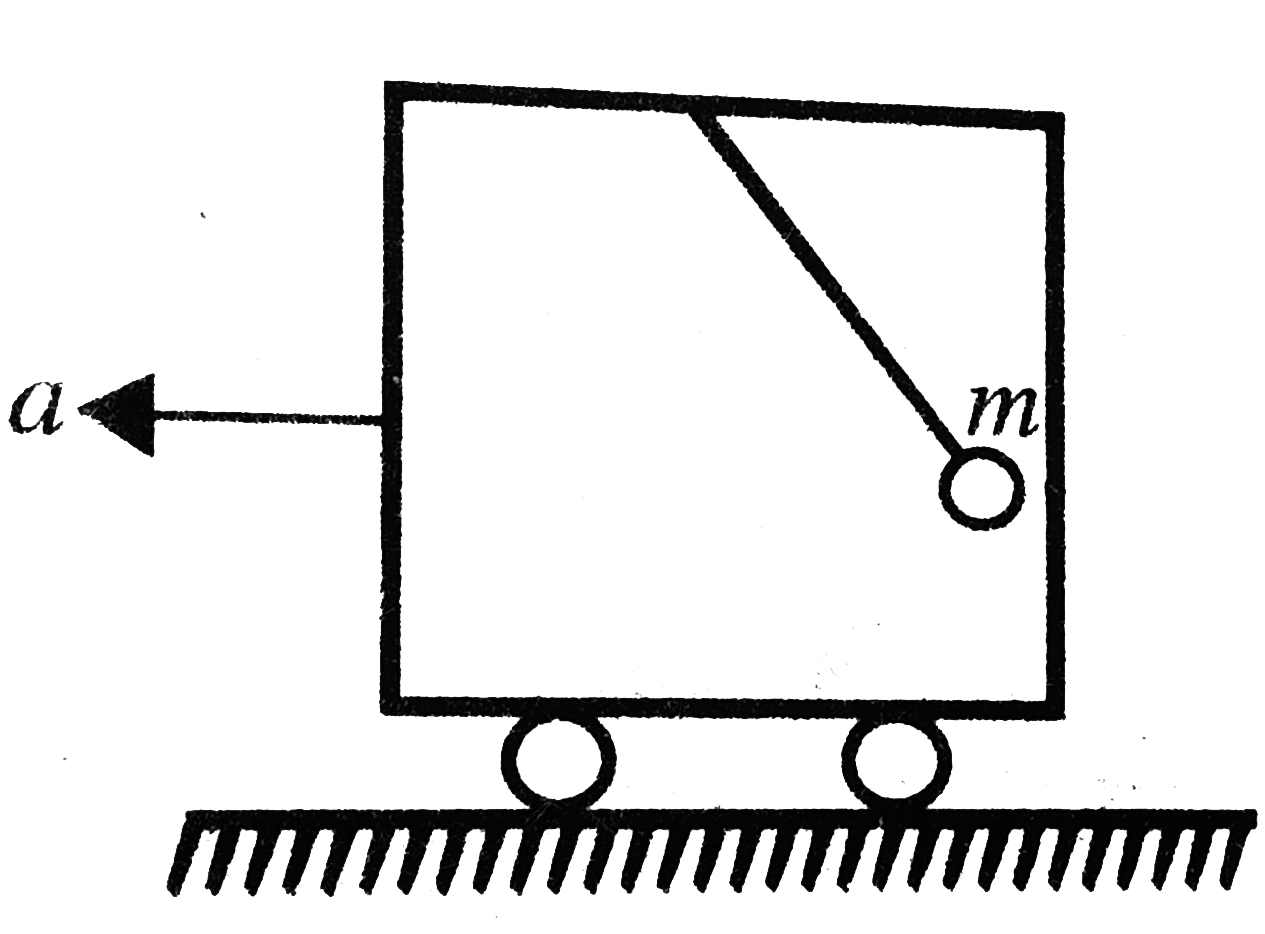Let YgandYr represent Young's modulus for glass and rubber respectively. It is said that glass is more elastic than rubber. Therefore , it follows
Yg=Yr
Yg<Yr
Yg>Yr
Yg/Yr=0
The correct Answer is:C
To solve the problem, we need to understand the relationship between Young's modulus and the elasticity of materials. The question states that glass is more elastic than rubber, and we need to express this in terms of Young's modulus.
1. Understanding Young's Modulus:
Young's modulus (Y) is defined as the ratio of stress (force per unit area) to strain (deformation in length/original length). It is a measure of the stiffness of a material.
Y=StressStrain
2. Comparing Young's Modulus of Glass and Rubber:
We denote the Young's modulus for glass as Yg and for rubber as Yr. The statement "glass is more elastic than rubber" implies that glass can deform less under the same amount of stress compared to rubber.
3. Interpreting Elasticity:
If a material is more elastic, it means it has a higher Young's modulus. Therefore, we can express this relationship mathematically as:
Yg>Yr
4. Conclusion:
Since it is given that glass is more elastic than rubber, we conclude that the Young's modulus of glass is greater than that of rubber.
Thus, Yg>Yr
Final Answer:
The Young's modulus of glass is greater than the Young's modulus of rubber, i.e., Yg>Yr.
---
Young's modulus (Y) is defined as the ratio of stress (force per unit area) to strain (deformation in length/original length). It is a measure of the stiffness of a material.
We denote the Young's modulus for glass as Yg and for rubber as Yr. The statement "glass is more elastic than rubber" implies that glass can deform less under the same amount of stress compared to rubber.
If a material is more elastic, it means it has a higher Young's modulus. Therefore, we can express this relationship mathematically as:
Since it is given that glass is more elastic than rubber, we conclude that the Young's modulus of glass is greater than that of rubber.
The Young's modulus of glass is greater than the Young's modulus of rubber, i.e., Yg>Yr.
Topper's Solved these Questions
- COMPETITION CARE UNITBook:ICSEChapter:COMPETITION CARE UNITExercise:PROPERTIES OF MATTER (SURFACE TENSION )
Explore 23 Videos
- COMPETITION CARE UNITBook:ICSEChapter:COMPETITION CARE UNITExercise:PROPERTIES OF MATTER (CALORIMETRY, CHANGE OF STATE & KINETIC THEORY OF GASES )
Explore 30 Videos
- COMPETITION CARE UNITBook:ICSEChapter:COMPETITION CARE UNITExercise:GRAVITATION
Explore 25 Videos
- CIRCULAR MOTION Book:ICSEChapter:CIRCULAR MOTION Exercise:MODULE 2 (FROM ROTATIONAL KINETIC ENERGY , WORK ,POWER)
Explore 24 Videos
- DIMENSIONSBook:ICSEChapter:DIMENSIONSExercise:SELECTED PROBLEMS (FROM CONVERSIONS OF ONE SYSTEMS OF UNITS INTO ANOTHER)
Explore 9 Videos
Similar Questions
Assertion : steel is more elastic than rubber.
Reason : For same strain , steel requires more stress to be produced in it.
View SolutionFor the different materials it is given that Y1>Y2 and B1<B2. Here, Y is Young's modulus of elasticity and B, the Bulk modulus of elasticity. Then we can conclude that
View Solution
Knowledge Check
Let Ys and YA represent Young's modulus for steel and aluminium respectively. It is said that steel is more elastic than aluminium.Therefore, it follows that
AYs=YABYs<YACYs>YADYSYA=0When an elastic material with Young's modulus Y is subjected to a stretching stress, the elastic energy stored per unit volume of the material is
AYs/2Bs2Y/2Cs2/2YDs/2Y
An elastic material of Young's modulus Y is subjected to a stress S. The elastic energy stored per unit volume of the material is
View SolutionA composite tube is made by striking a thin steel tube on a brass tube. If AS and AB are the respective sectional areas of the steel and brass tubes and YS and YB their Young's moduli, then find the Young's modulus of single tube of the same length and total sectional area, which would behave in the same fashion as that of the composite tube.
View SolutionA: Diamond is more elastic than rubber.
R: When same deforming force is applied diamond: deforms less than rubber.
View SolutionA wire havinga length L and cross- sectional area A is suspended at one of its ends from a ceiling . Density and young's modulus of material of the wire are ρ and Y, respectively. Its strain energy due to its own weight is ρ2g2AL3αY. Find the vqalue of α
View SolutionA bob of mass m hangs from the ceiling of a smooth trolley car which is moving with a constant acceleration a. If young's modulus, radius and length of the string are Y,r and I, respectively, find the (a) stress in the string and (b) extension of the string when it makes a constant angle relative to vertical.

View SolutionIn case of bending of a beam, depression depends on Young modulus of elasticity Y as
View Solution

